Why you can trust Tom's Hardware
Benchmark Results
Our standard benchmarks and power tests are performed using the CPU’s stock frequencies (including any default boost/turbo), with all power-saving features enabled. We set optimized defaults in the BIOS and the memory by enabling the XMP profile. For this baseline testing, the Windows power scheme is set to Balanced (default) so the PC idles appropriately.
Synthetic Benchmarks
Synthetics provide a great way to determine how a board runs, as identical settings should produce similar performance results. Turbo boost wattage and advanced memory timings are places where motherboard makers can still optimize for stability or performance, though, and those settings can impact some testing.
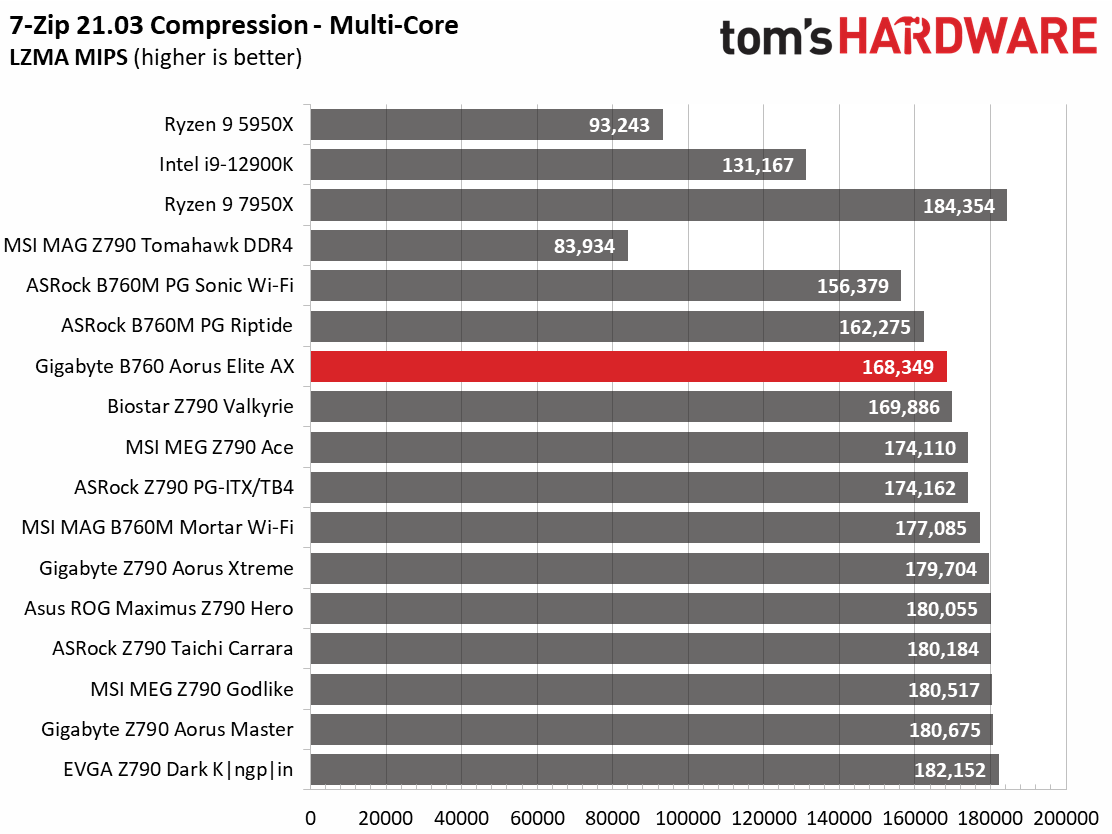




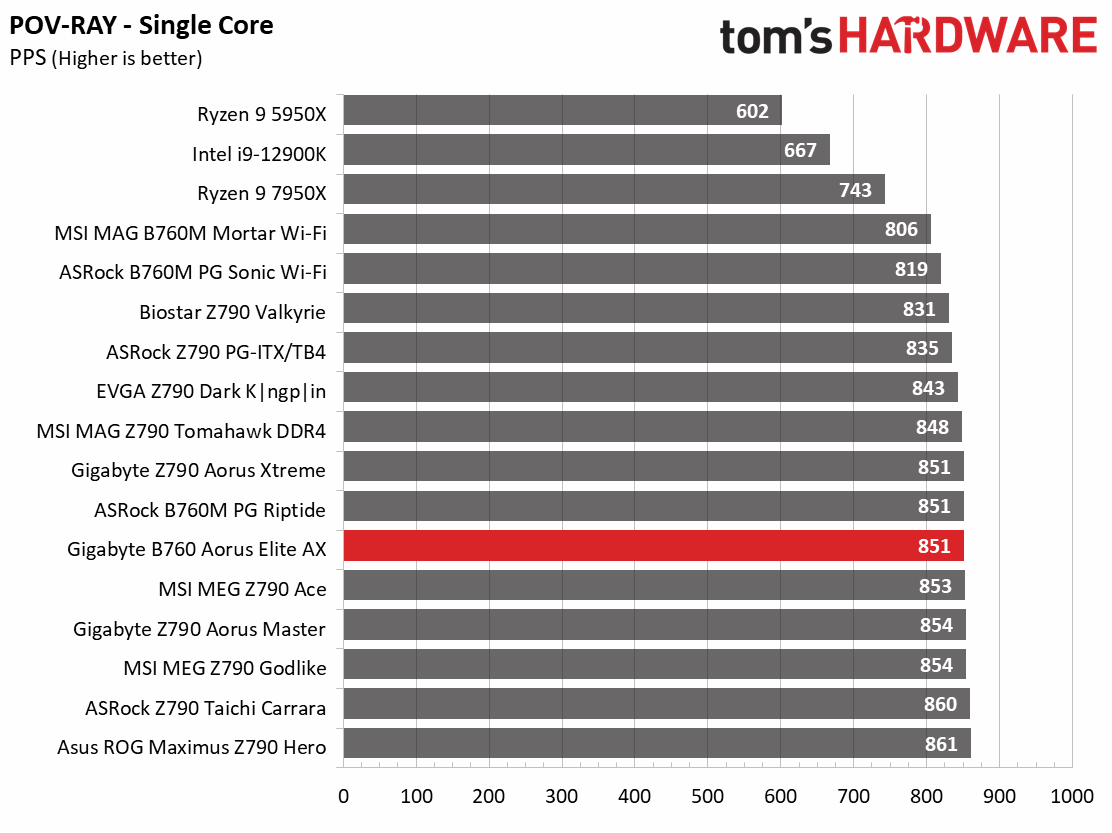





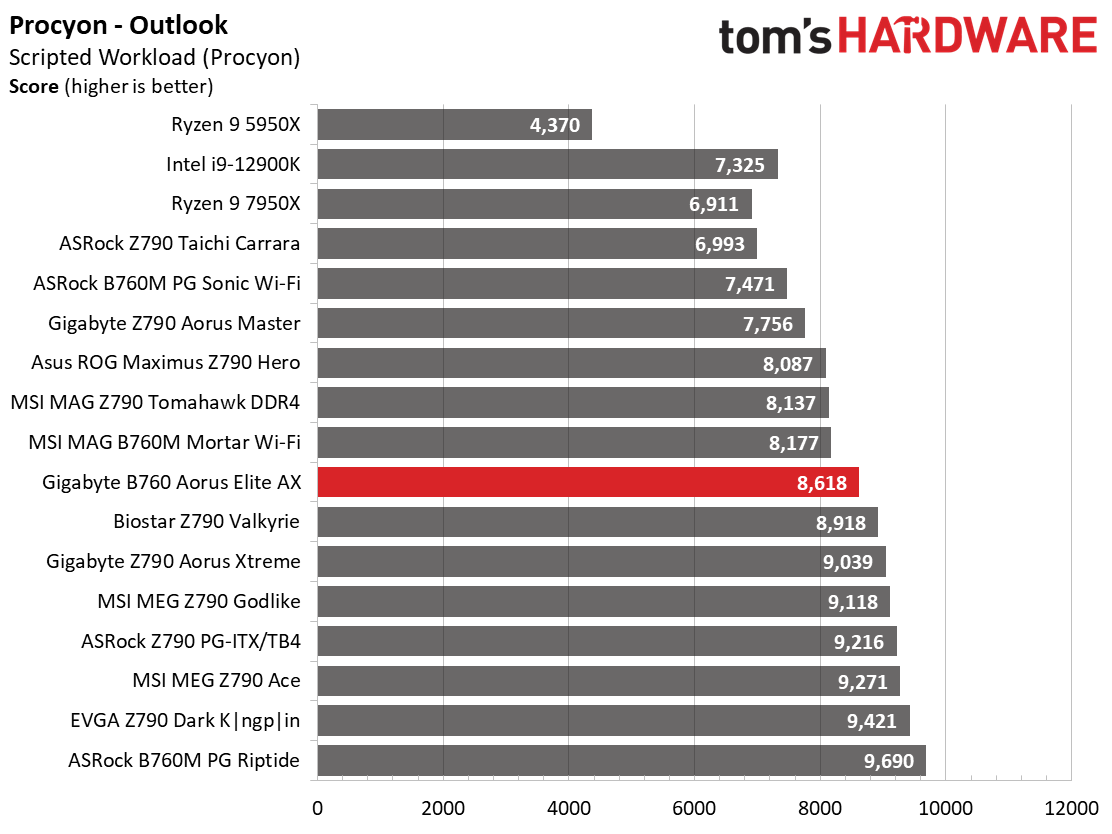



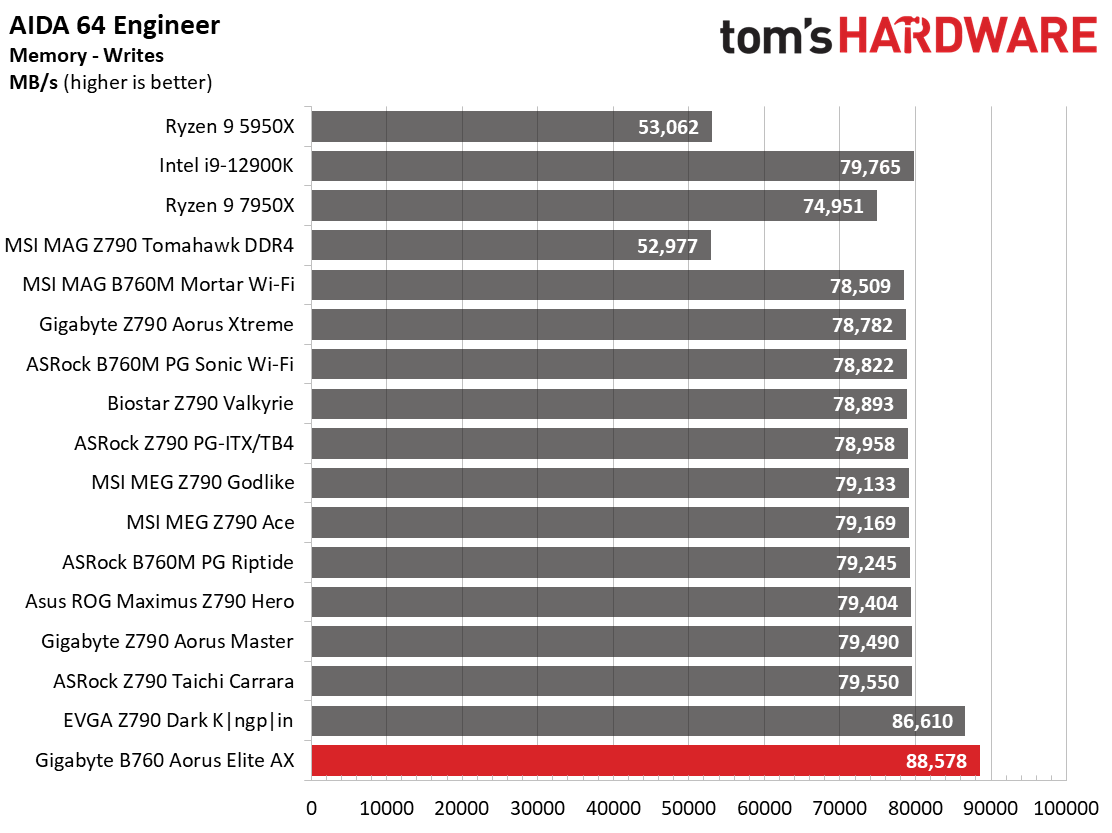


Results from our synthetic benchmarks vary, but overall they were average. Nothing stood out as too slow or fast with Gigabyte’s PerfDrive set to the default (Spec Enhance).
Timed Applications
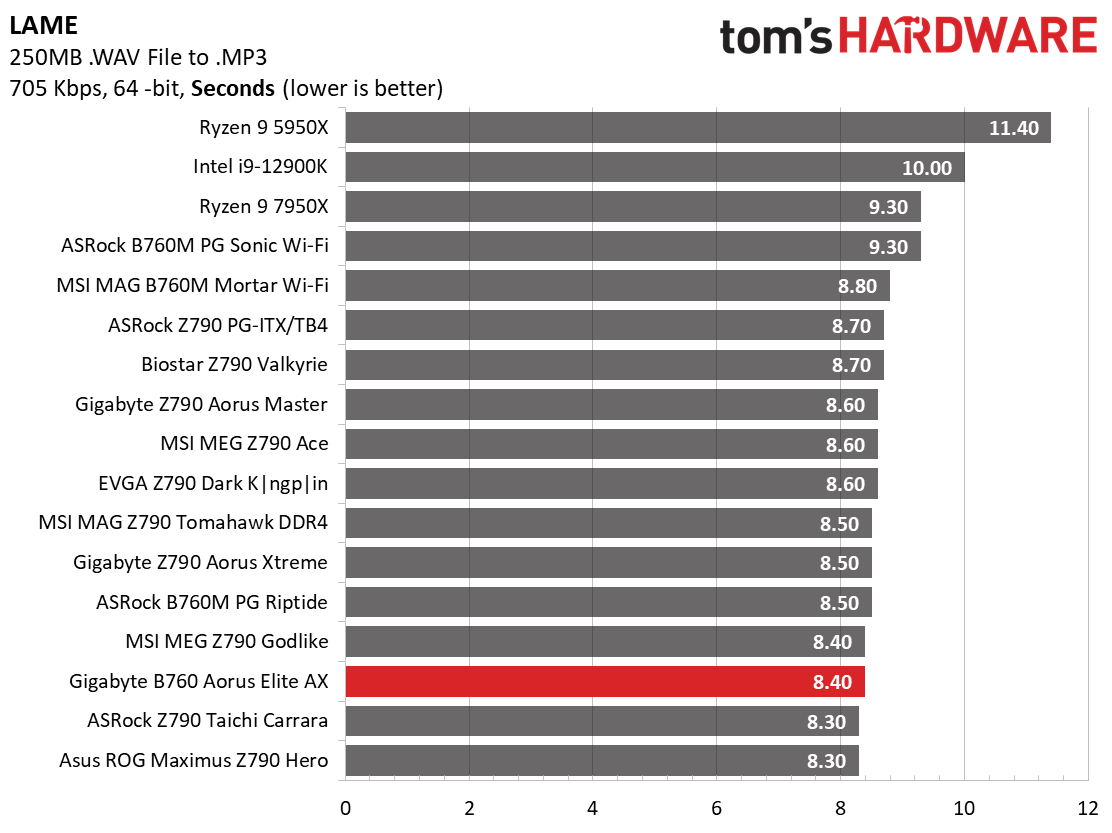



In our timed applications, the B760 Aorus Elite AX was also a tale of each benchmark. LAME results were slightly above average, as was the Handbrake .264 test. However, the x265 test was a bit slower than our average, as was the Corona benchmark time.
3D Games and 3DMark


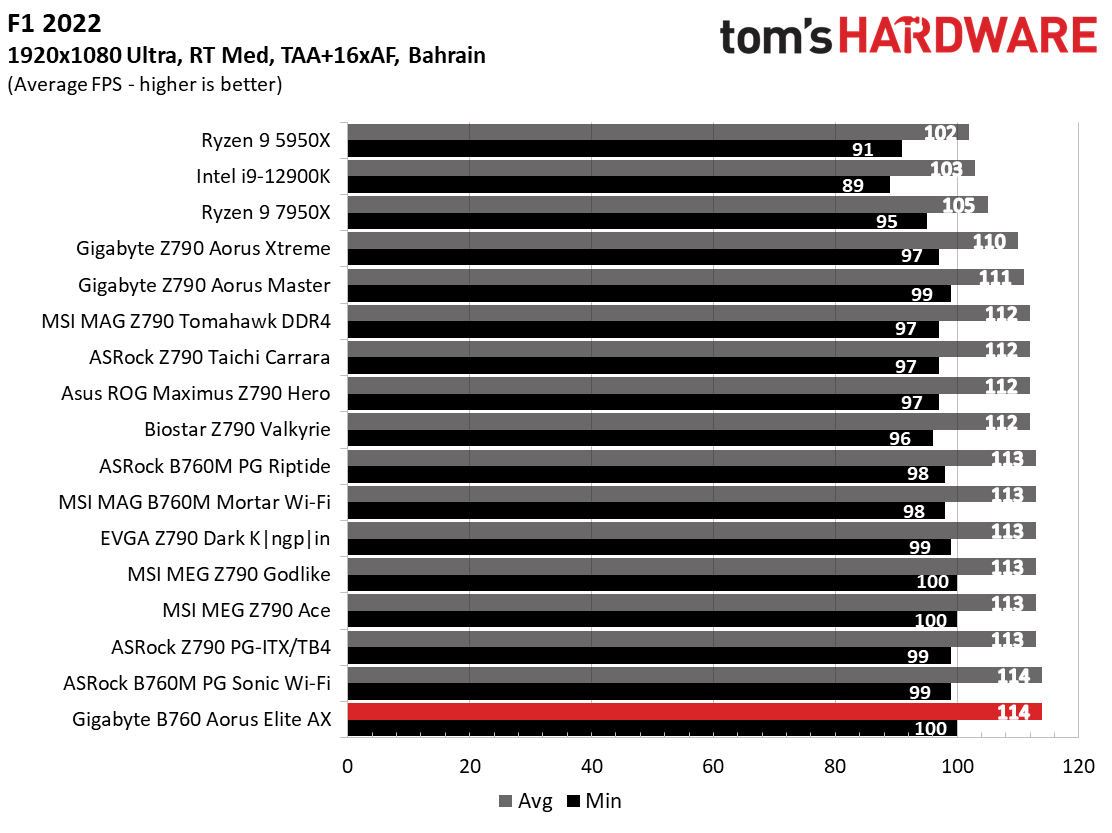
Starting with the launch of Zen 4, we’ve updated one of our games, F1 21, to the latest version, F1 22. We're keeping Far Cry 6. We run the games at 1920 x 1080 resolution using the Ultra preset (details listed above). As the resolution goes up, the CPU tends to have less impact. The goal with these settings is to determine if there are differences in performance at the most commonly used (and CPU/system bound) resolution with settings most people use or strive for (Ultra). We expect the difference between boards in these tests to be minor, with most differences falling within the margin of error. We’ve also added a minimum FPS value, affecting your gameplay and immersion experience.
The results in our game tests were some of the best we’ve seen. 3DMark Fire Strike was around average, while Timespy was the highest scoring thus far. In Far Cry and F1 22, its average frames per second matched the highest we’ve seen with the minimum up there as well. Clearly, it’s a competent gamer in this configuration.
Power Consumption / VRM Temperatures

We used AIDA64’s System Stability Test with Stress CPU, FPU, Cache and Memory enabled for power testing, using the peak power consumption value. The wattage reading is from the wall via a Kill-A-Watt meter to capture the entire PC (minus the monitor). The only variable that changes is the motherboard; all other parts remain the same.
Power use on the B760 Aorus Elite averaged out to use the least among this generation we’ve tested so far. The 358W reading at load was one of the lower values, while idle was average or slightly better. Power use isn’t a worry on this system out of the box. However, when you change the Perfdrive settings, things can go up depending on what setting you use.

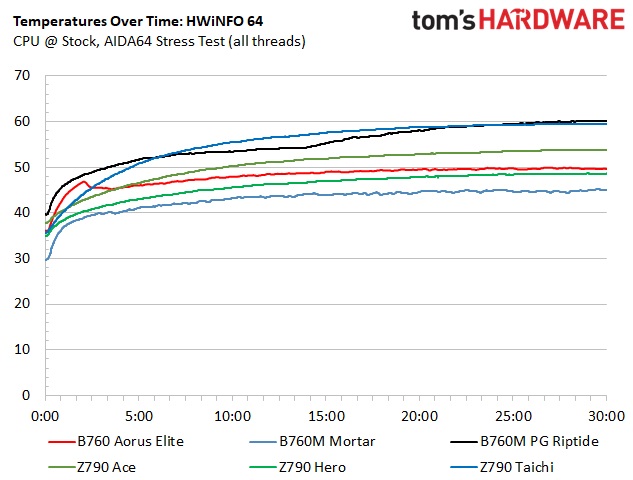
VRM temperatures were well within order on this motherboard. The processor throttles back considerably at the default settings with this Perfdrive option. Temperatures of the VRMs peak at almost 50 degrees Celsius, which is easily within the specification of the MOSFETs. Since you can’t overclock on this board/platform past turbo, the cooling solution proved to work great for this board.
Overclocking
The B760 chipset for Intel doesn’t allow users to overclock the processor (although there are rare exceptions), but you can overclock the memory.
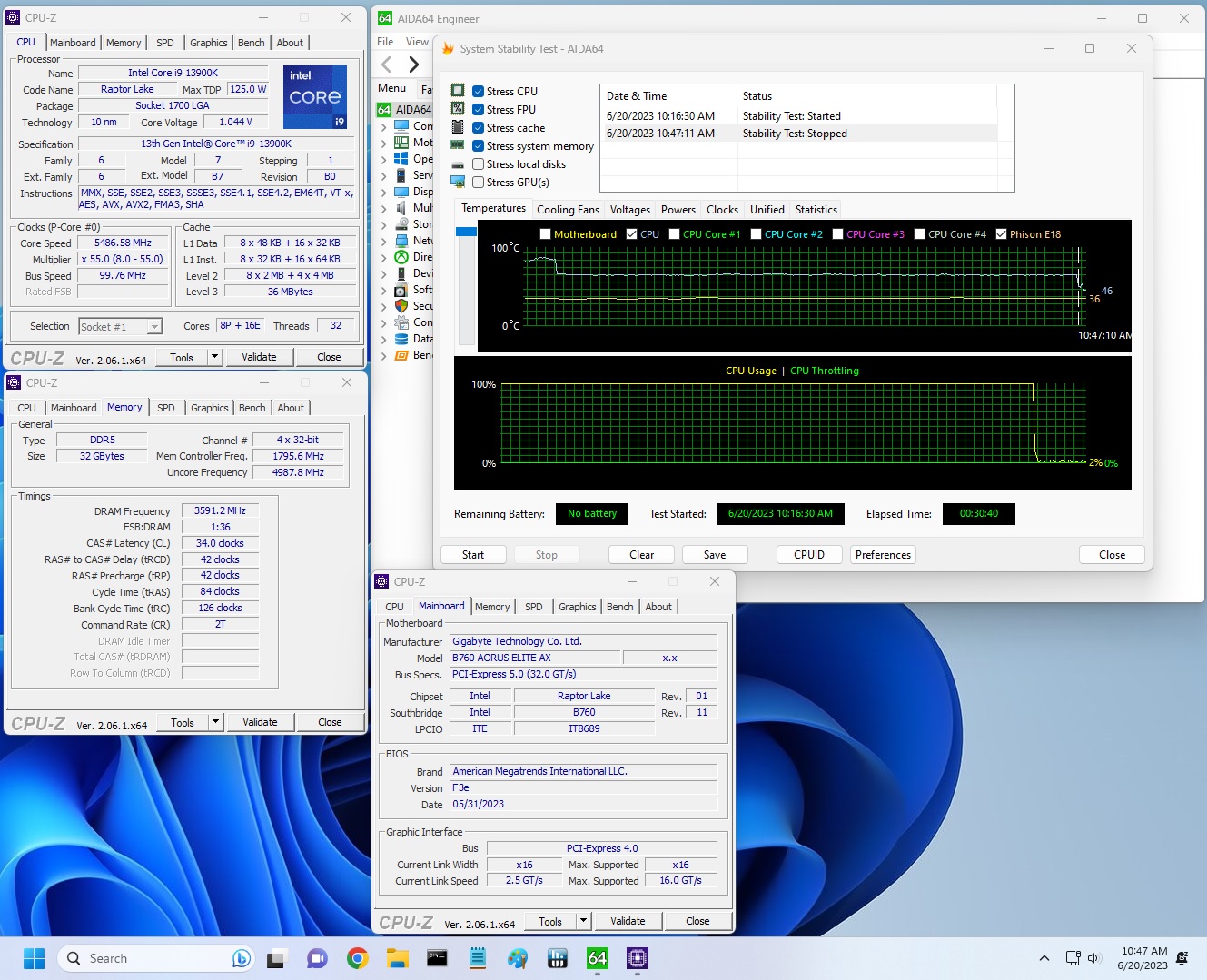
That said, all three of our memory kits worked without any tweaking, by enabling the XMP profile. Our base DDR5-5600 kit worked great across testing, and our fastest kit, the Teamgroup DDR5-7200, was stable during our stress test. This board won’t break any memory speed records, but it’s easy to get well past the sweet spot where price and performance meet.
Bottom Line
The Gigabyte B760 Aorus Elite AX is designed to be a less expensive way into the latest Intel platform, and it achieves as much. At the time of this writing at Newegg, it was priced at $179.99. For the money, you get the Aorus design theme, capable power delivery, 10 USB ports on the rear IO, three M.2 sockets and four SATA ports, and of course, 2.5 GbE and integrated Wi-Fi 6E. Although you will pay a premium to use DDR5, this board is one of the better values around the price point.
That said, each board partner offers a competitive SKU in this price realm. The least expensive is the ASRock B760 Pro RS ($139.99), followed by our Gigabyte, MSI MAG B760 Tomahawk Wi-Fi ($199.99), and finally, the Asus TUF Gaming B760-Plus Wi-Fi ($209.99). The biggest difference between these boards is looks, price, and USB count. Otherwise, they all have the same budget audio codec, M.2 socket and similar SATA port counts (three or four). Our Gigabyte has the most USB ports on the rear IO, but only the Asus and MSI come with a 20 Gbps port. So it just depends on your needs.
In the end, the $180 ($170 after the rebate card) for this board is a fair price among its competitors. So long as you do not need a 20 Gbps USB port, it’s the best option of the group from our perspective. For the money, you get Gigabyte’s Aorus styling, well-rounded specifications, and a price that doesn’t break the bank.
If you’re looking to get into the latest Intel processors without spending a ton of money, the B760 Aorus Elite AX should be on the shortlist. Just note that DDR4-based boards tend to cost about $20 less, with DDR4 RAM costing significantly less than DDR5, with little in the way of real-world performance differences between the two. So if you want to build an affordable system with the best performance for your money, a DDR4-based motherboard is still a smart choice, even though DDR5 prices have fallen significantly in recent months.
MORE: Best Motherboards
MORE: How To Choose A Motherboard
MORE: All Motherboard Content

Joe Shields is a Freelance writer for Tom’s Hardware US. He reviews motherboards.
